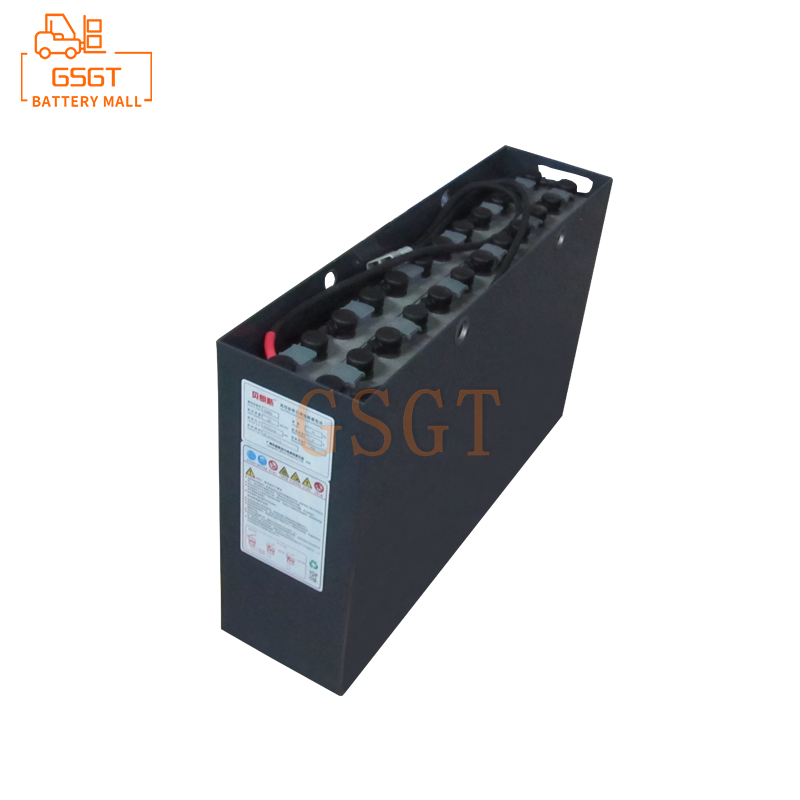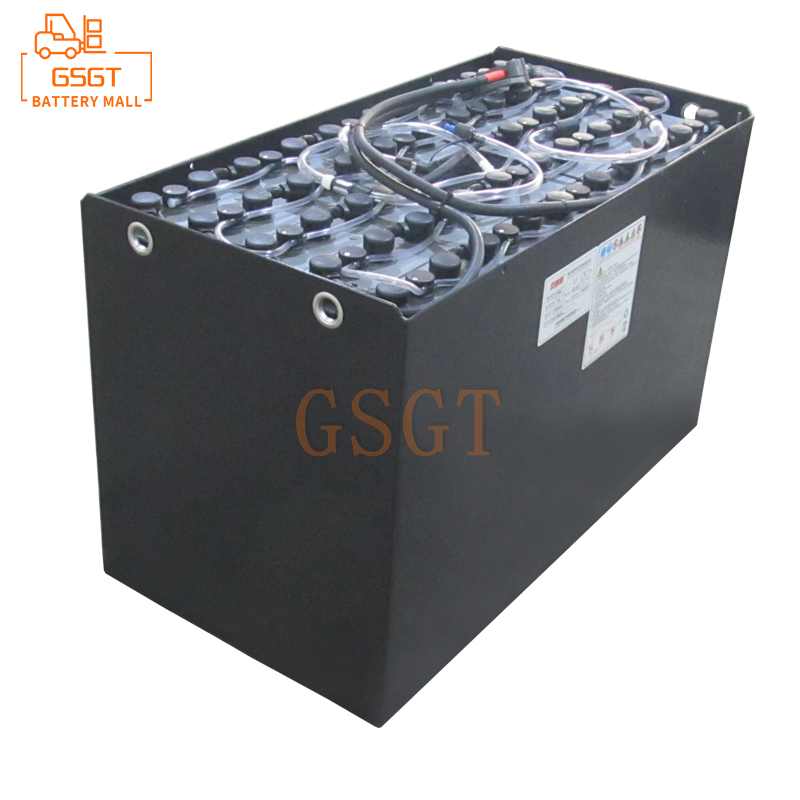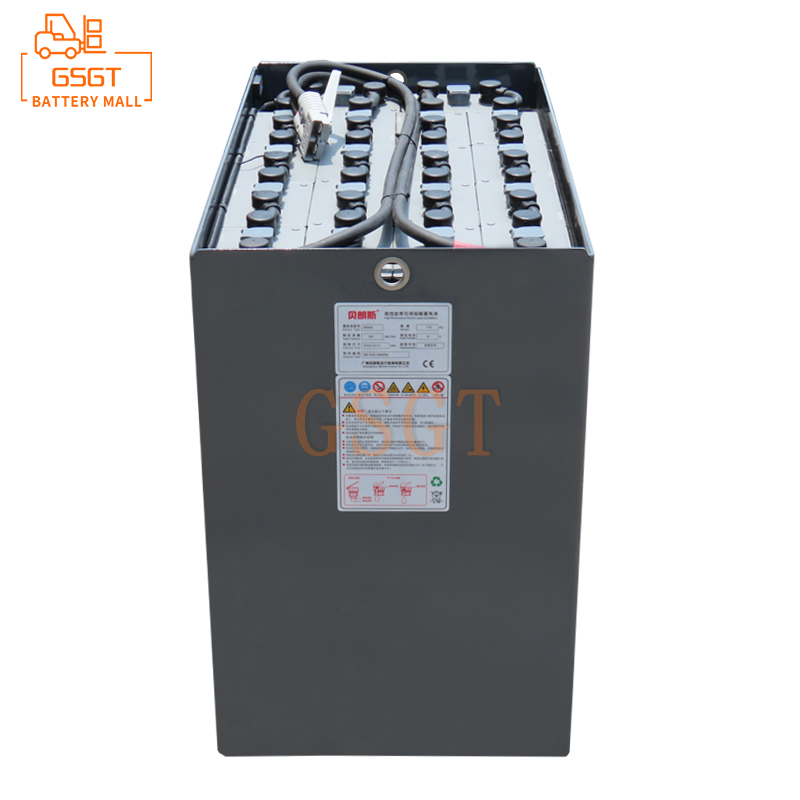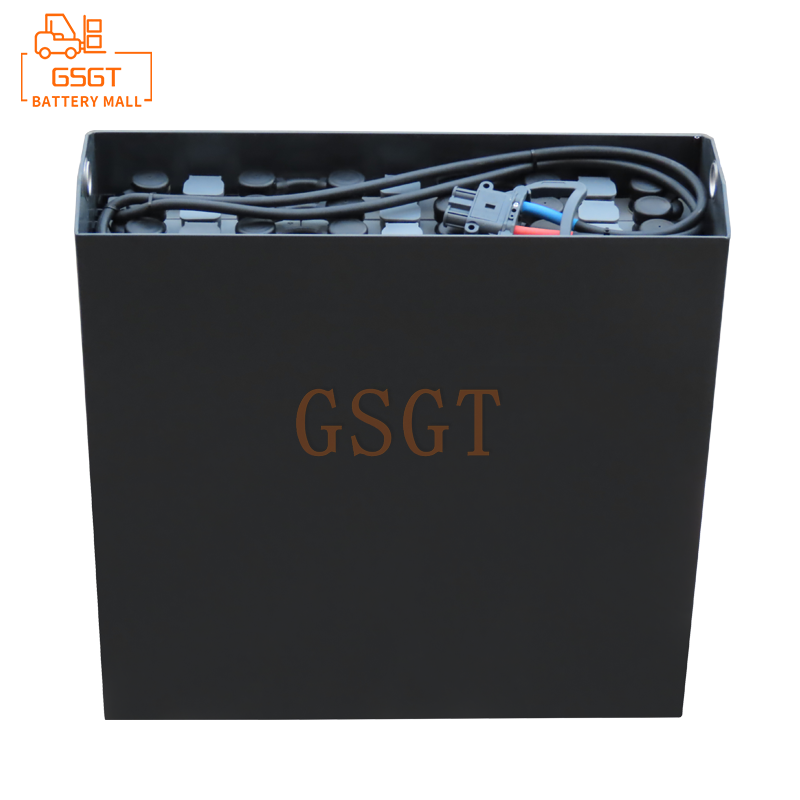Time:2025-06-16 10:34:46
Browse:597
Introduction
In modern logistics and industrial production, forklifts, as key material handling equipment, their efficient and stable operation is of vital importance. Lead-acid batteries, as a commonly used power source for forklifts, occupy an important position in many forklift application scenarios due to their advantages such as mature technology, low cost, and good high-rate discharge performance. However, the performance and lifespan of lead-acid batteries are influenced by multiple factors. If they are not properly maintained, it will not only reduce the working efficiency of forklifts and increase operating costs, but also may lead to safety hazards. Therefore, formulating a scientific and reasonable maintenance cycle for forklift lead-acid batteries is of great significance for ensuring the normal operation of forklifts, extending the service life of batteries, and improving the economic benefits of enterprises.
Factors affecting the performance and lifespan of lead-acid batteries
Charging and discharging factors
1. ** Charging method ** : Inappropriate charging methods can cause great damage to the battery. For instance, overcharging can cause a large amount of gas to be generated inside the battery, leading to water loss in the electrolyte and accelerated corrosion of the plates. Undercharging, however, prevents the lead sulfate on the plates from being fully converted into active substances. Long-term accumulation will cause sulfation of the plates and reduce the battery capacity. Adopting appropriate charging methods such as constant voltage and current limiting charging and three-stage charging, and strictly controlling the charging voltage, current and time, is the key to ensuring that the battery is fully and safely charged.
2. ** Depth of Discharge ** : Frequent deep discharges will accelerate the sulfation of the plates and shorten the battery life. It is generally recommended that the discharge depth of lead-acid batteries in forklifts be controlled between 50% and 80% to avoid excessive discharge. When the battery power drops to a certain level, it should be charged in time to prevent excessive battery consumption.
3. ** Charge and Discharge Frequency ** : Excessively frequent charge and discharge cycles will cause the active material on the battery plates to repeatedly expand and contract, accelerating aging. In actual use, the working tasks of forklifts should be arranged as reasonably as possible to reduce unnecessary charging and discharging cycles.
Electrolyte factor
1. ** Liquid level ** : If the electrolyte liquid level is too low, the upper part of the plates will be exposed above the liquid surface, causing sulfation of the plates. If the liquid level is too high, it may cause the electrolyte to overflow during charging, corroding the battery and forklift components. Regularly checking the electrolyte level and adding distilled water or dedicated electrolyte replenishment solution as needed to maintain the level within the normal range is an important measure to ensure the normal operation of the battery.
2. ** Density ** : The density of the electrolyte directly affects the performance and lifespan of the battery. Excessively high density will accelerate the corrosion of the plates. If the density is too low, the battery capacity will decrease. Under different operating environmental temperatures, the density of the electrolyte needs to be adjusted to an appropriate value to ensure that the battery performs at its best.
Temperature factor
1. ** High-temperature Impact ** : When the ambient temperature is too high, the chemical reaction rate inside the battery accelerates, the water loss of the electrolyte intensifies, the corrosion of the plates speeds up, and at the same time, the self-discharge rate increases. All these can significantly shorten the battery's lifespan. When using forklifts in high-temperature environments, effective heat dissipation measures should be taken, such as enhancing ventilation and installing cooling devices, to prevent the battery from overheating.
2. ** Low-temperature impact ** : Low temperatures increase the viscosity of the electrolyte, slow down the diffusion rate of ions, resulting in an increase in battery internal resistance, a decrease in charge acceptance capacity, and a reduction in discharge capacity. In cold environments, the battery can be preheated appropriately or an electrolyte formula with better low-temperature performance can be adopted to improve the battery's working performance.
Other factors
1. ** Operating environment ** : The humidity, dust, corrosive gases and other factors in the battery's working environment will all have an impact on it. High humidity environments may cause corrosion of the battery casing and terminals. Dust accumulation can affect battery heat dissipation, and corrosive gases may damage the internal structure of the battery. Therefore, the working environment of the forklift should be kept clean and dry to prevent the battery from being exposed to harsh conditions.
2. ** Maintenance and Care Status ** : Regular inspection, cleaning and maintenance of the battery, as well as timely detection and handling of abnormal battery conditions such as damaged casing, loose wiring, and sulfation of the plates, can effectively extend the battery's lifespan. Neglecting maintenance and care will cause battery problems to accumulate gradually, eventually leading to premature battery scrapping.
The scientific basis for setting the maintenance cycle
Based on the number of battery charge and discharge cycles
The lifespan of lead-acid batteries is usually measured by the number of charge and discharge cycles. Generally speaking, a high-quality lead-acid battery for forklifts can have a cycle life of about 1,500 times under normal use and maintenance conditions. By statistically analyzing the actual usage of forklifts, recording the depth of discharge before each charge, and combining the designed cycle life of the battery, the remaining service life and maintenance cycle of the battery can be roughly estimated.
Combined time interval
In addition to the number of charge and discharge cycles, the time interval is also an important basis for setting the maintenance cycle. Even if forklifts are used less frequently, if the battery is left idle for a long time, its performance will decline due to self-discharge, drying up of the electrolyte and other reasons. Therefore, regardless of the number of charge and discharge cycles of the battery, regular maintenance should be carried out at regular intervals. Routine maintenance includes cleaning the battery surface, checking if the terminals are loose, and measuring the electrolyte level, etc. For batteries that have been idle for a long time, it is even more necessary to increase the maintenance frequency, such as conducting a check and supplementary charging every two weeks, to prevent sulfation of the battery plates.
Consider the working environment and usage frequency
The working environment and usage frequency of forklifts have a significant impact on battery performance and lifespan. These factors must be fully considered when formulating maintenance cycles. For forklifts operating in high-temperature, high-humidity, dusty or corrosive environments, the maintenance cycle of the battery should be appropriately shortened. For instance, for forklifts used in high-temperature workshops, the electrolyte level of the battery should be checked and cleaned once a month, and a comprehensive performance test should be conducted once every quarter. For forklifts used in relatively mild environments, the maintenance cycle can be relatively extended. For frequently used forklifts, as the number of battery charge and discharge cycles increases rapidly, the maintenance cycle also needs to be shortened accordingly, and the monitoring and maintenance of the battery should be strengthened.
The specific plan for the maintenance cycle
Daily maintenance
1. ** Visual Inspection ** : Before each use of the forklift, the operator should inspect the battery's appearance to check if the battery casing is damaged or leaking, and if the terminals are loose or corroded. If the casing is found to be damaged, the battery should be replaced in time to prevent the leakage of electrolyte and avoid safety accidents. Loose or corroded terminals will affect the charging and discharging performance of the battery. They need to be tightened and cleaned in time.
2. ** Battery Level Check ** : Through the battery level display device on the forklift dashboard, understand the remaining battery power. When the battery level drops to 20% - 30%, the forklift should be stopped from use and charged in time to avoid excessive discharge. Meanwhile, record the battery level before each charge to analyze the battery's usage.
3. ** Clean the battery ** : Regularly wipe the battery surface with a clean damp cloth to remove dust, dirt and electrolyte residues, keeping the battery surface clean and dry. Avoid wiping the battery with organic solvents or sharp objects to prevent damage to the battery casing.
Weekly maintenance
1. ** Electrolyte Level Check ** : Open the battery liquid filling cap and check if the electrolyte level is within the standard range (generally, it should be 15-20mm higher than the plate protection net). If the liquid level is too low, distilled water or deionized water should be added. Do not add tap water or sulfuric acid solution. After addition, ensure that the electrolyte level meets the standard requirements.
2. ** Electrolyte Density Measurement ** : Use a hydrometer to measure the density of the electrolyte. When fully charged, the density of the electrolyte should generally be 1.280 ± 0.005g/cm³. If the density deviation is large, adjustments should be made according to the actual situation. If the density is too low, take out part of the electrolyte and add an appropriate amount of sulfuric acid solution with a higher density. If the density is too high, add distilled water to dilute it. After adjustment, measure the density again until it meets the standard.
3. ** Inspection of Connection Components ** : Check whether the connection wires and terminals between battery packs are firm and whether the connection torque meets the requirements. If it is loose, it should be tightened in time to prevent poor contact from increasing resistance and affecting battery performance. At the same time, check whether the connecting wires are damaged or aged. If there are any problems, replace them in time.
Monthly maintenance
1. ** Battery Cell Voltage Measurement ** : Use a multimeter to measure the voltage of each battery cell. Under normal circumstances, the voltage of a single battery cell should be between 2.1 and 2.2V. If it is found that the voltage of a single battery is too low or too high, or has a significant difference from that of other single batteries, it may indicate that there is a problem with the battery, such as sulfation of the plates or internal short circuits, and further inspection and handling are required.
2. ** Equalization charging ** : Perform a single equalization charge on the battery. Equalization charging can eliminate the voltage differences among individual cells in a battery pack, prevent overcharging or undercharging of individual cells, and extend the overall battery life. The equalization charging method can be carried out according to the battery manual or the operation guide of the charger. Generally, normal charging is performed first. After the charging is completed and left to stand for 1 hour, the second stage of normal charging current is used to continue charging until severe bubbles appear. Then, stop charging for 1 hour. This process is repeated several times until the voltage and density remain unchanged. After an interval, charge again until severe bubbles appear immediately.
3. ** Battery Pack Performance Evaluation ** : Based on the usage of the battery this month, charging and discharging data, appearance inspection, and various measurement data, the performance of the battery pack is evaluated. Record parameters such as the charging time, the amount of electricity charged, and the depth of discharge of the battery, and analyze whether the battery performance shows a downward trend. In case of any abnormality, take timely measures for maintenance or repair.
Quarterly maintenance
1. ** Comprehensive Performance Testing ** : Please have professionals or use professional testing equipment to conduct a comprehensive performance test on the battery, including measuring the battery's internal resistance, capacity, self-discharge rate, etc. An increase in battery internal resistance, a decrease in capacity, and an increase in self-discharge rate may all be signs of battery aging or malfunction. Through detection, accurately understand the health status of the battery to provide a basis for formulating subsequent maintenance plans.
2. ** Clean the Battery box ** : Open the battery box and clean the dust, debris and electrolyte deposits inside. Check whether there is any corrosion or damage to the battery box. If necessary, repair or replace it. Keeping the battery box clean and in good condition helps improve the battery's heat dissipation performance and safety.
3. ** Inspection of Charging Equipment ** : Inspect and maintain the charging equipment of the forklift, including whether the output voltage and current of the charger are stable, and whether there are any problems such as damage or poor contact in the charging circuit. Ensure that the charging equipment is working properly to provide stable and appropriate charging conditions for the battery.
Annual maintenance
1. ** Deep Discharge and Activation treatment ** : Perform a deep discharge on the battery to reduce its charge to nearly 0%, followed by deep charging and activation treatment. Deep discharge and activation can remove sulfides on the plates, restore part of the battery capacity and extend the battery's service life. However, deep discharge and activation treatment should be carried out with caution and strictly in accordance with the instructions of the battery manufacturer to avoid excessive damage to the battery.
2. ** Overall Assessment and Maintenance plan formulation ** : Conduct a comprehensive disassembly and inspection of the battery to check the wear and corrosion of the plates, whether the separators are damaged, and whether the connecting strips are firm, etc. Based on the various inspection results of the annual maintenance, the overall performance of the battery is evaluated to determine whether it can still be used normally. If there are serious problems with the battery, formulate a detailed maintenance plan or consider replacing the battery with a new one. At the same time, summarize the battery maintenance experience of the past year, optimize and adjust the maintenance cycle and maintenance plan to better meet the usage requirements of the next year.
Conclusion
Scientifically and reasonably formulating the maintenance cycle of forklift lead-acid batteries and strictly following the maintenance plan are the keys to ensuring stable battery performance and extending battery service life. Through daily, weekly, monthly, quarterly and annual hierarchical maintenance, comprehensive monitoring and maintenance of the battery's charging and discharging conditions, electrolyte status, appearance and internal structure, etc., problems can be identified and solved in a timely manner, which can effectively reduce the battery failure rate, improve the working efficiency of forklifts, and provide reliable power support for the production and operation of enterprises. Meanwhile, with the continuous development and innovation of technology, new battery maintenance technologies and products are constantly emerging. Enterprises should pay attention to industry trends, introduce advanced maintenance concepts and methods in a timely manner, further enhance the maintenance level of forklift lead-acid batteries, reduce operating costs, and achieve the maximization of economic and social benefits.

$1060

$3050

$1630

$1200

MESSAGE
Professional And Efficient
Security
Affordable Price
Professional Services